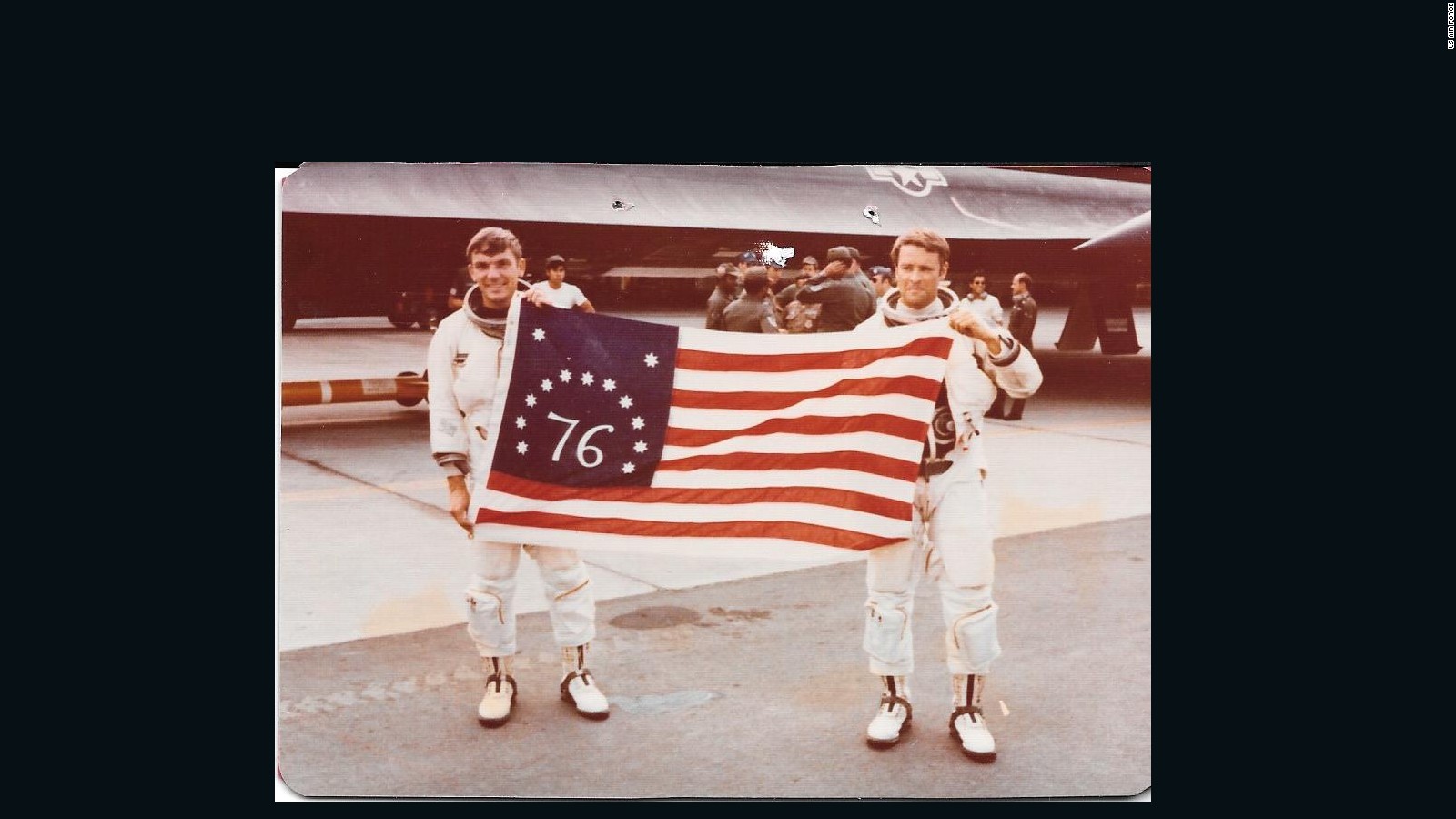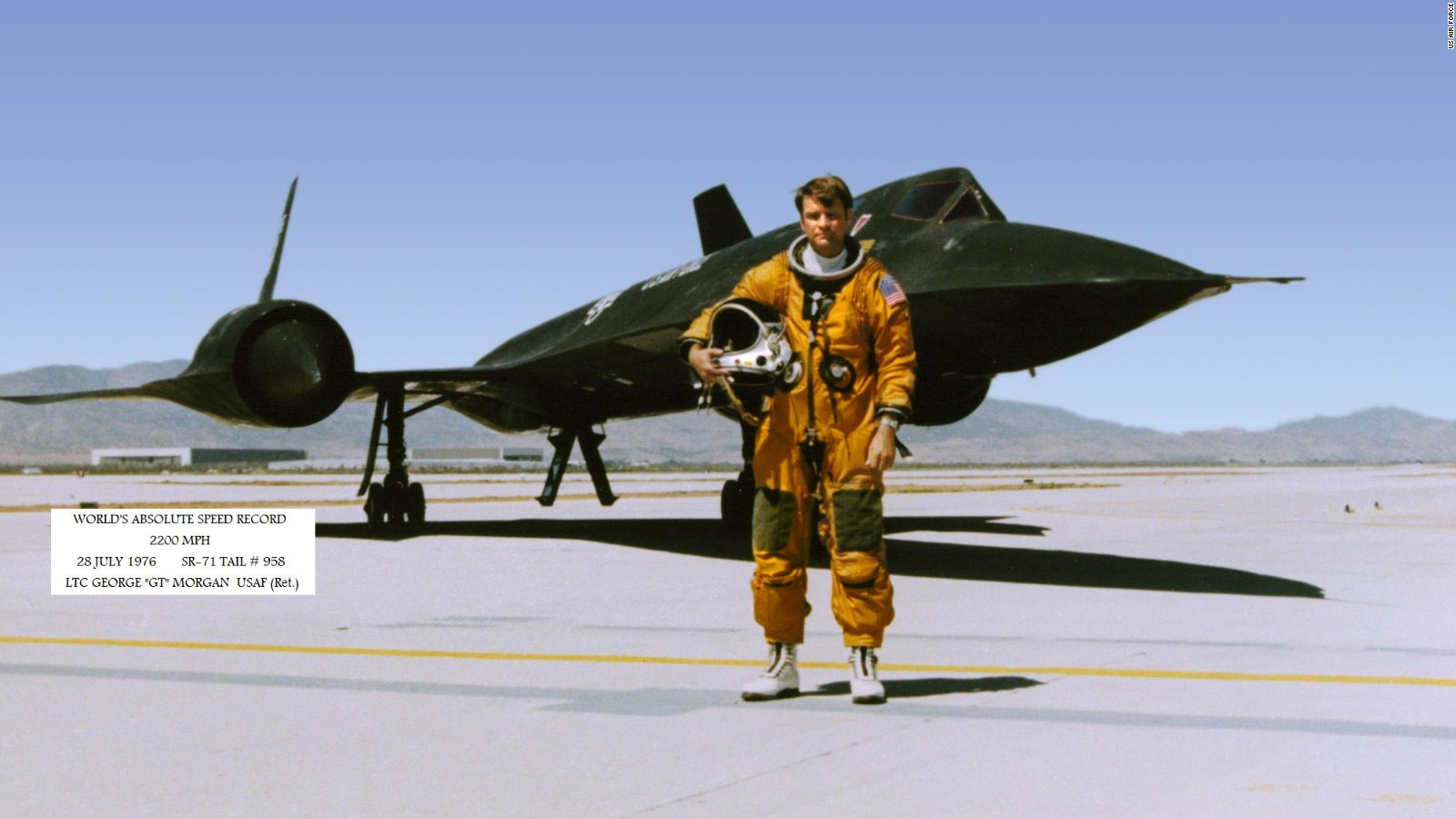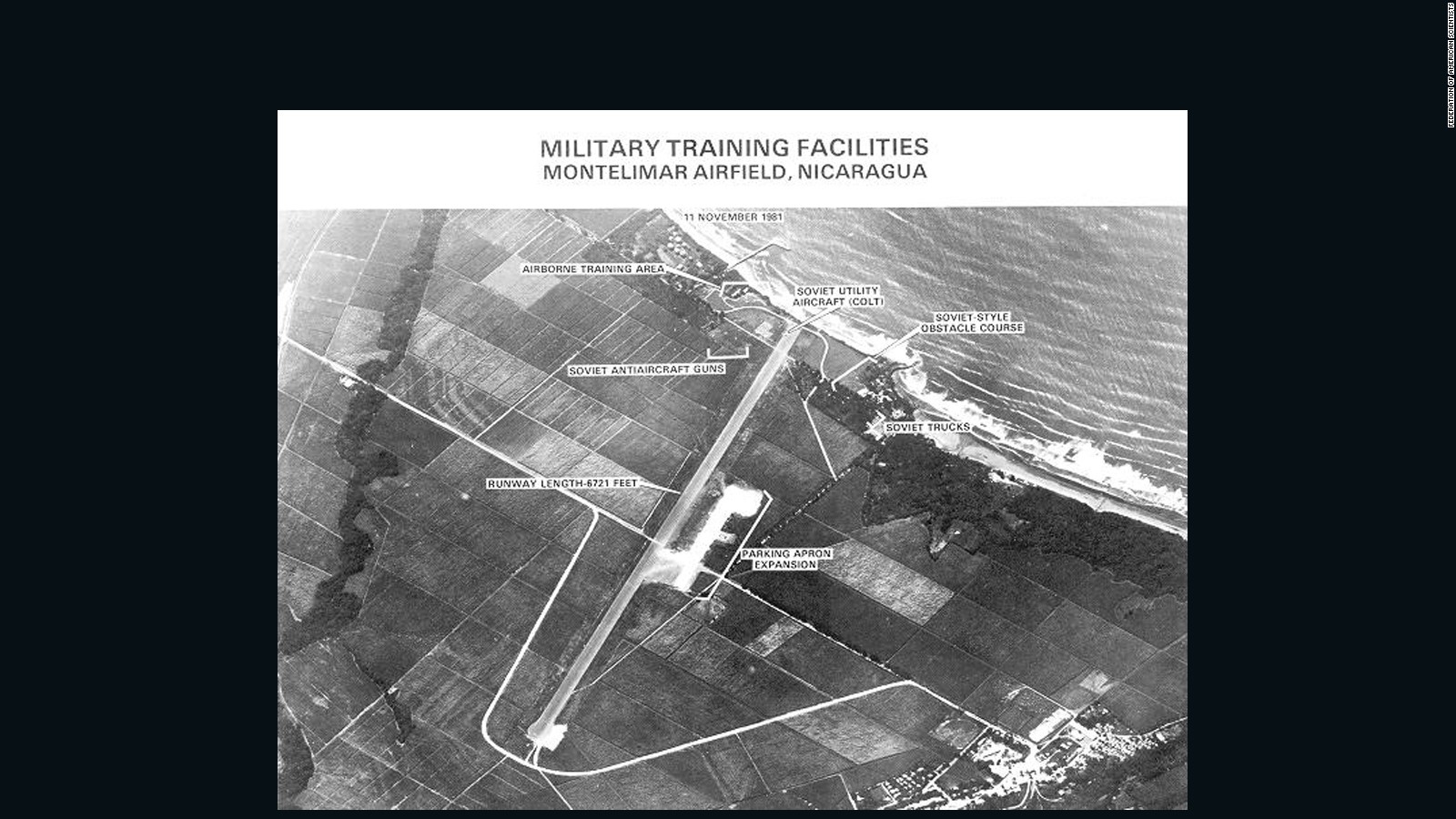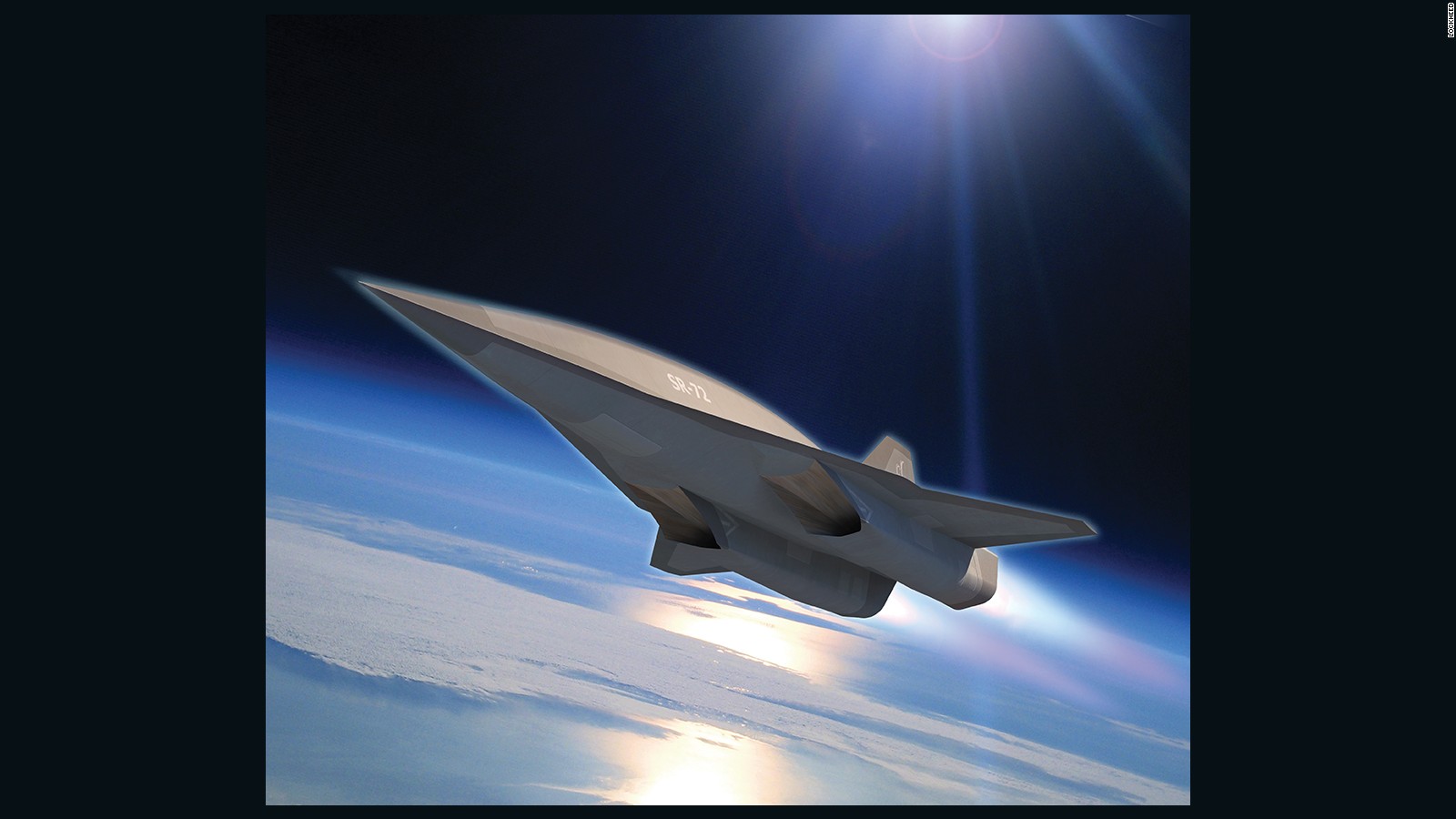Warner Robins, Georgia (CNN)Al Joersz and George Morgan remember the day they joined the ranks of the fastest men alive.
In 1976 they smashed the world aviation speed record by blasting across the Western United States in America's super spy plane, the Lockheed SR-71.
Official speed: 2,193 mph.
"It wasn't supposed to be that big of a deal," Joersz said on the phone from his home in Temple, Texas.
But it's still kind of a big deal. That was nearly 40 years ago, and their record still stands.
"We knew we were going to be setting some records, but we didn't look at it as something that would endure this long."
The two Air Force officers had been picked to fly a special U.S. military demonstration for the World Air Sports Federation, the international group that oversees aviation records.
Morgan,
who spoke with CNN by phone from his home in Hoodsport, Washington,
said they were lucky to get the assignment. "We didn't go as fast as we
could. We just went as fast as we needed to go to set the record."
Moving at 2,193 mph may be hard to wrap your head around.
This may help:
• Think about moving more than three times faster than the speed of sound, aka Mach 3.
• Consider this: It's more than 33 miles per minute.
• Somebody call Superman: Joersz and Morgan literally flew "faster than a speeding bullet."

Airmen
Al Joersz, left, and George Morgan hold a bicentennial American flag
after breaking the world aviation speed record in 1976.
Clearly
this flying machine was special. In fact, the SR-71 proved itself from
the 1960s through the 1990s as an important intelligence tool that
helped ease rising U.S.-Soviet tensions during the Cold War.
Spirits
were high at California's Beale Air Force Base on July 28, 1976, as the
ground crew buckled Joersz and Morgan into their seats — Joersz, the pilot, in front; Morgan, the reconnaissance officer in charge of surveillance equipment, sitting in a separate cockpit, behind.
They
looked like astronauts in their helmets and pressurized flight suits,
which were required because the plane flies so high. Joersz recalls that
the tanks were almost full — filled with a unique fuel developed
especially for the plane's two huge, powerful engines.
After
making final checks of their equipment, Joersz lined up the long,
black, ominous aircraft at the end of the runway. Ground crews signaled a
green light for departure. Then Joersz put his left hand on the
throttle, pushed it forward and aircraft Number 17958 took off.
"We
climbed directly to our target altitude right from brake release,"
Joersz remembered. Soon they were soaring at 80,600 feet — more than
twice the altitude of passenger jets — so high that Joersz remembers
seeing the curvature of the Earth.
After leveling off, he shot the plane at full throttle across most of the first pass of the 15 kilometer straight-line course.
In
the seat behind him, Morgan helped Joersz follow the mission checklist
and made sure they remained on track. "I was watching very closely to
make sure we were right on the money," Morgan said. "And we were."
To
break the record, the rules called for Joersz to turn the plane around
and repeat the same path at virtually the same altitude. Morgan fed
Joersz audio cues alerting him when to change course.
"I
powered back ... and began the turn — 90 degrees to the left, then a
270-degree turn to the right," Joersz said. The jet re-entered the
course at precisely 80,600 feet. That's about 15 miles high.
Morgan
and Joersz encouraged each other over their headsets, Morgan recalled."
'What do you think? Are we gonna make this thing? Oh, yeah, piece of
cake!' "
As Joersz remembers, after flying over four states, they landed safely back at Beale about 55 minutes after they took off.
The
plane came to a stop. Joersz and Morgan climbed out of their cockpits
and were met by a crowd of VIPs saluting, shaking hands and
back-slapping. The celebration included generals, Lockheed executives
and a congratulatory phone call with the commander in chief of the Air
Force Strategic Air Command.
Per the
rules, the official speed was an average of both legs. Final
calculations showed that Joersz and Morgan had broken the previous
record by 123 mph -- set by a similar Air Force spy plane, the YF-12A,
in the '60s.
They actually thought they could do better, hoping for 2,200 mph, said Joersz. "We got pretty close — within 7 mph."
Superhot
Now,
four decades later, the plane Joersz and Morgan flew that day holds
court inside a hangar at the Museum of Aviation near Georgia's Warner
Robins Air Force Base.
Stenciled on its
towering tail is a white snake and the number 17958. It's easy to
imagine it streaking across the sky that day in 1976.
From tip to tail, the jet shows engineering details that scream speed:
• Dramatically sweeping delta-shaped wings
• Giant, custom made engines that gulped 8,000 gallons of fuel per hour at cruising speed
• Tires that were infused with aluminum powder to ward off temperatures upward of 600 degrees Fahrenheit.
• Quartz-covered
cockpit windows, which got so hot from high-speed friction that pilots
warmed their in-flight meals by holding their food up to the glass.
Despite protection from his pressure suit gloves, "you couldn't hold
your hand up to the glass for more than five seconds without pulling it
back due to the heat," Joersz said.
Planes
have flown faster — unofficially — but this is the one that set the
official record for a piloted plane powered by an air-breathing engine.
The
pressurized flight suits added to "the mystique, the magic, the drama
of this airplane," Joersz said. They also led to awkward moments. The
simple act of scratching your nose was made nearly impossible while
wearing a helmet. "You figured out a way to do it by turning your head
and the helmet and using the mic to scratch your nose," Joersz said.
'Bam!'
Despite
its speed, piloting the SR-71 didn't feel the same as flying a fighter
jet during air-to-air combat, said Joersz. The plane's design sacrifices
maneuverability for speed and higher altitude. "I definitely wouldn't
call it boring," he joked. "It's more intense — rather than a lot of
thrashing around." The plane "wasn't excruciatingly difficult to fly, it
was just challenging. You had to pay a lot of attention and be prepared
to handle little things it would throw at you once in a while."
Those "little things" could be dangerous, like the phenomenon known as "unstarts."
Unstarts
happened when shock waves created by the jet's incredible speed would
suddenly force one engine to lose power, shoving the plane suddenly
sideways.
"The plane sucks that shock
wave in there," Morgan said. "It just slams that engine shut. If your
helmet hit the left cockpit window — bam! — that meant it was the right
engine. That was the key. It happened so fast, you really didn't have
time to look around."

Reconnaissance
Systems Officer George Morgan stands in front of a Cold War-era U.S.
Air Force SR-71 spy plane in an undated photo.
If
the pilot failed to control the unstart, "The nose would pitch up,"
said Joersz. "If the pitch up became too extreme, then you could lose
the airplane ... the airplane would break apart."
Training
for how to handle unstarts "got your heart beating pretty well," Joersz
said. "After a while you kind of got used to them." Eventually the
planes were outfitted with an automatic system that helped pilots manage
unstarts.
'Drip, drip, drip'
Another quirk: The plane was infamous for leaking fuel.
The
extreme temperature changes expanded and contracted its fuel tanks.
Eventually that created leaks in the sealant where the tanks were
joined. "Lockheed changed the sealant composition many times through the
years trying to get one that would work better than the last one —
trying to solve the issue of the leaks," Joersz said. "But they never
did. It always leaked."
"It didn't pour
out, but it was leaking — yeah — drip, drip drip," said Morgan. "But
when you get up to speed, the planes kind of seal themselves."
Spotting a ball 15 miles away
The plane wasn't just fast. It took pictures. Really, really detailed pictures.
During
the Yom Kippur War of 1973, U.S.-Soviet tensions spiked when Israeli
forces squared off against the armies of Egypt and Syria. Joersz and
Morgan flew missions in separate planes over the region.
"Making
a turn, we took a picture of a soccer game which was off to the side
about 12-15 miles away and we could see the soccer ball coming off a
guy's foot," Morgan said. "It wasn't really perfect, but you could tell
the guy was kicking a ball."

FAS.org posted this 1981 image of a Nicaraguan airfield, which it says was captured by surveillance equipment aboard an SR-71.
During
those tense days, President Richard Nixon moved the alert level for
American forces to Defcon 3 — Defense Condition 3 — one step closer to
war. The spy planes returned with "photographic information that allowed
us to provide a clear picture of how the war was progressing," Joersz
said. "So we helped our national decision makers make wise decisions to
do — and not do — particular things."
Breaking up
Flying
and maintaining the SR-71 was expensive. Nonetheless, the aircraft was
such a valuable spy tool that Washington had a hard time breaking up
with it. It could do things satellites couldn't.
"Everybody
knows when a satellite is coming. They just go hide 'til the satellite
goes away," Morgan said. "But when the SR shows up, nobody knows it's
there."
Congress eventually forced the
SR-71 into retirement in 1989. But the Pentagon missed it so much, the
plane briefly returned to duty in the '90s. Finally, the last two
deployed SR-71s — which NASA was using for research — were put out to
pasture in 1999.
Lockheed built only 32
SR-71s. Most of them now live in museums. Number 17958 was delivered to
Warner Robins in 1990. It sits next to other military surveillance
icons, the Global Hawk and the U2.
Now
age 71 and retired, Joersz is confident a new aircraft will someday
break the record, perhaps reaching five or even six times the speed of
sound. "It'll make Mach 3 seem pretty slow."
In fact, last December, NASA hired Lockheed to research development of a new hypersonic engine that might power a surveillance jet named the SR-72.

Lockheed Martin says it's developing a successor to the legendary supersonic SR-71 spy jet. They're calling it the SR-72.
As
the 40th anniversary of their famous flight draws near, Joersz is
considering a trip to Georgia to reconnect with the plane that put him
in the record books. "I felt very, very fortunate to be a guy that was
flying this wonderful airplane," he said.
The
bonds between these machines and their flight crews still run deep.
Morgan, now 74, also would love to reunite with the fastest plane in the
world. "The first thing you would do is walk up to it and touch it," he
said, and relive a few supersonic memories.
"That's my baby," Morgan said. "She did her job and she came through."
No comments:
Post a Comment
Drop your Comments Here